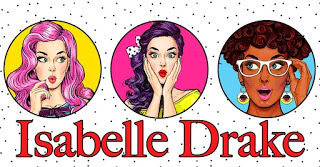Isabelle Drake's Blog, page 11
July 9, 2021
Country guys, a country cocktail, and steamy summer heat 🌻
June 17, 2021
Fictive Dream, how it happens
James Frey, in his book, How to Write a Damn Good Novel II, takes the concept of the fictive dream a step further than a singular focus on concrete detail. “As a fiction writer, you’re expected to transport a reader. Readers are said to be transported when…they feel that they are actually living in the story world and the real world around them evaporates” (6). In this transported state, the reader’s subconscious—the area where sensory input is processed and decoded—has been engaged and is the primary source of response. Tapping into the reader’s subconscious requires more than carefully selected details; it requires a delicate linking of details to story components such as action and characterization. Frey describes three sequential steps that enable the writer to reach the subconscious of readers and thus fully transport them into the fictional dream.

Sympathy: “Sympathy is the doorway through which the reader gains emotional access to a story” (8). The first step in connecting the reader emotionally to a character is to place the character in a situation which will evoke an emotion so intense—loneliness, repression, danger, embarrassment—that the reader will feel sympathy for the character.
Identification: “Identification occurs when the reader is not only in sympathy with the character’s plight, but also supports his or her goals and aspirations and has a strong desire that the character will achieve them” (10). In this second step the writer makes clear what the character does or does not want to happen. By clarifying the character's goal, the writer keeps the reader engaged.
Empathy: A writer should “[u]se sensuous and emotion-provoking details that suggest to the reader what it is like to be [the character]” (13). Empathy is a stronger emotion than sympathy, and it is through empathy that the reader will feel what the character is feeling.
Details are critical to the creation of the fictive dream. To achieve complete immersion, the writer must focus on the goal of the detail, to engage the reader emotionally or intellectually, and determine use accordingly. The writer selects the details and thus creates the reader’s emotional and intellectual experience. Burroway says that a detail is “[s]ignificant if it...conveys an idea or a judgment or both” (76). This is not to say that writers should use details to insert their own judgments. They should offer details in such a way as to allow the reader the opportunity to infer a judgment. Burroway clarifies for writers how to interweave intellect and emotion effectively:
Much of what [the writer] mean[s] will be an abstraction or a judgment—love requires trust, children can be cruel. But if you write in abstractions or judgments, you are writing an essay, whereas if you let [the reader] use [their] senses and form interpretations, [they] will be involved as participants in a real way (76).
Burroway clarifies, “A detail is ‘definite’ and ‘concrete’ when it appeals to the senses. It should be seen, heard, smelled, tasted, or touched” (75). Consequently, if the writer wants the reader to be engaged both intellectually and emotionally, sensory details are essential. Sensory detail is particularly effective because it taps into the non-logical part of the brain. Therefore, if a writer aims to reach the reader emotionally, it is essential to provide sufficient sensory detail. The emotion will be engaged first, and then, through the establishment of the fictive dream, the reader will become engaged intellectually via the sensation that they have been transported into the fictive world and must now decode the story information and events. If a writer seeks to touch primarily the intellect, a different approach is used. In either instance it is important to note that the writer is in control of the reader’s experience.
June 4, 2021
Rock & Roll fantasy not about Henry Rollins, cute dog video, and an extra easy to make low carb 🍹cocktail
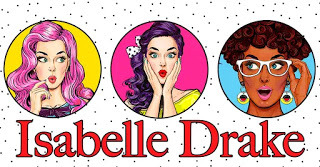
Hit here for the June newsletter
 Rock & Roll Fantasy, my book of the month, is one of my all time best-selling stories. The idea came to me after a conversation about when I met Henry Rollins, who at the time I met him was not famous and the lead singer for the band Black Flag. The conversation went something like this.
Rock & Roll Fantasy, my book of the month, is one of my all time best-selling stories. The idea came to me after a conversation about when I met Henry Rollins, who at the time I met him was not famous and the lead singer for the band Black Flag. The conversation went something like this. Two people talking about Henry Rollins' comedy show and how great it was and how funny he is.
Wanting to be sure I wasn't left out of the convo, because I was (am) a good decade or more older than the young folks having the convo, one asked: "Do you know what show we're talking about? Have you ever heard of Henry Rollins?"No, the resulting story has nothing to do with Henry Rollins. But the guys in it do has tattoos and do play rock music.
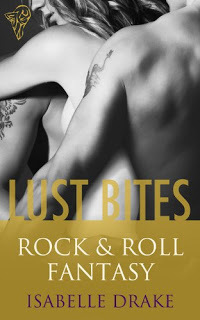 grab your copy
grab your copyJune 2, 2021
june bug, the cocktail of the month

This month's treat is a one-step wonder with only 7 carbs.
Ingredients:
1 ounce Midori melon liqueur
1 ounce malibu coconut rum
1⁄2ounce banana liqueur (optional)
1 ounce prepared sweet-and-sour mix
2 ounces pineapple juice
One Step:
Mix well and pour over ice. Enjoy!
May 7, 2021
Selfie me, a hot soccer star, and lavendar lemonade 🍋
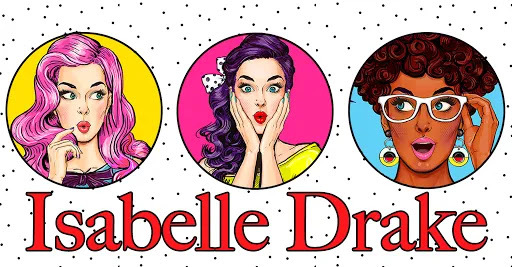
Hit Here for the May Newsletter
In defense of the selfie...
 If you've been around the Isadrakeverse for a while, you've seen a selfie or two. Or three. I've taken selfies alone, with friends, and a few strangers. I've shared my skills and selfie happiness with others.
If you've been around the Isadrakeverse for a while, you've seen a selfie or two. Or three. I've taken selfies alone, with friends, and a few strangers. I've shared my skills and selfie happiness with others. Isabelle Drake Facebook Album: (Not so) Serious Selfies
I like selfies and I'm not embarrassed to say it. Selfies give us a way to document our own life. We selfie

enthusiasts decide what matters most. We decide on the angle, the background, and the facial expression. There's no pressure to follow the instructions of others or make the facial expression they want. We get to own our own face and experience.
Isn't the selfie just another version of the artist's self-portrait?

April 18, 2021
Romance Daily News, my interview
What's the story behind your latest book?
One of my earliest memories is of a cereal box—Super Sugar Crisp, now called Golden Crisp—with an actual, playable cardboard ‘flexi record’ printed on the backside. My mom had just taken the box from the grocery bag, and it sat on the kitchen table, waiting to get stored. At age 4, I was already a music fan and pop culture scholar in the making, so I was both fascinated and excited. Still a preschooler, and so not great with scissors, I enlisted by big sister’s help in cutting the record from the package. I’m guessing the box, missing most of its backside, ended up in the cupboard.
The small album, featuring brightly colored images of Archie and the gang, played at 33 1/3 speed and had 4 songs from cartoon band, The Archies, including one of my favorites, the mega-hit, Sugar, Sugar. The flexi-record stayed on my family’s turntable for at least a day. Which, in little kid time, is forever.
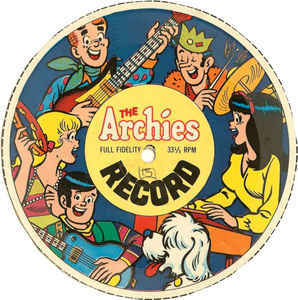
Fast forward about two decades, and I have a son who reads, collects, and studies comics and comic culture. As we strolled through garage sales, flea markets, and used bookstores for old issues of Batman and other superhero comics, he’d encourage me to find some for myself. Just like that, comics, specifically Betty and Veronica, were back in my life.
Fast forward a few more years, and I’ve become a fiction writer and a college professor. As I scroll through TV shows, waiting for something to catch my attention, I spot an ad for Riverdale. I’m intrigued. They’ve created something new yet still familiar. I’m curious and wondering what is similar and what is different. Soon, I’m tuning in to the show on a regular basis and using my fiction writing experience to analyze the storyline and the characters. What works? What doesn’t? Why did the creators make the decisions they did? Eventually, I was so far down the Riverdale rabbit hole that I began to do more formal research.
What is the greatest joy of writing for you?
Two things: telling stories and growing as a writer. Each story is unique because of the characters. So telling stories is a way of giving someone a voice. I know, the characters aren’t real people, but they represent real struggles, difficulties and motivations.
Growing as a writer matters to me; I constantly test boundaries and give myself opportunities for growth. Expanding into non-fiction, after years of writing fiction, gave me a new challenge.
What do you read for pleasure?
Like most writers, I read everything. Most recently, I read Tender is the Flesh by Agustina Bazterrica and The Sanatorium by Sarah Pearse.
Describe your desk
My desk is a beautiful antique, a gift from my mom. She used it for many years in her law office, then retired and passed it on to me. It’s a dark walnut stain, handmade in the mid-1800’s in Grand Rapids, Michigan. It has super deep drawers, so I have plenty of room for my postcards, extra pens, post-it notes…
Where did you grow up, and how did this influence your writing?
 I grew up in Cincinnati, Ohio which is sometimes referred to as the gateway of the south. There is a tradition of story-telling that is unique to the South and it continues to influence me. I see it in the way I connect characters back to their families and my love of small details.
I grew up in Cincinnati, Ohio which is sometimes referred to as the gateway of the south. There is a tradition of story-telling that is unique to the South and it continues to influence me. I see it in the way I connect characters back to their families and my love of small details. What are you currently working on?
I’m working on a science fiction novel and an article about creative writing theory. I usually work on more than one project at a time. That way, if one needs to sit for a minute while I sort something out, I can continue writing the other.
What drives you to keep on writing?
Readers! They are the best. Their excitement for the next book is so appreciated and always keeps me excited too. They love reading as much as I do! And, of course, the above mentioned challenge that comes with writing.
If you could tell your younger writing self anything, what would it be?
Having fun matters. Writing what you love matters. So–if it isn’t fun and writing it doesn’t make you excited, move on.
What is the one thing you want your readers to know about your books?
I switch genres and subgenres to nurture my love of writing. I love a challenge. As soon as someone tells me something can’t be done…I’m off to try and do it.
April 4, 2021
Of Easter Bunnies and Baskets
April 2, 2021
Fun with flames & a new release: Riverdale, The Binge Watcher's Guide 💛
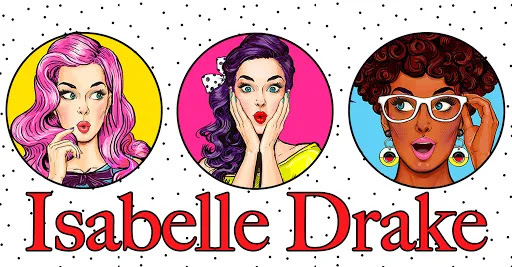 Hit here for the April newsletter.
Hit here for the April newsletter.In the midst of the 2020 Coronavirus Pandemic, binge-watching became an acceptable pastime. No more did we bingers have to discuss our hours in front of the screen with a sheepish attitude. Time spent ‘binging’ was no longer considered ‘wasted.’ Now, that time represented a connection to other humans. Sections of the ‘stay at home’ time are marked by which show we ‘were on.’ What did I binge? Riverdale. I rewatched each of the Riverdale episodes three times. All four seasons...all seventy-six episodes. That's A LOT of teen gothic drama.
The end result, my non-fiction book of quizzes, sassy summaries, and trivia, that is out now!
March 23, 2021
The Binge Watcher's Guide to Riverdale, out now
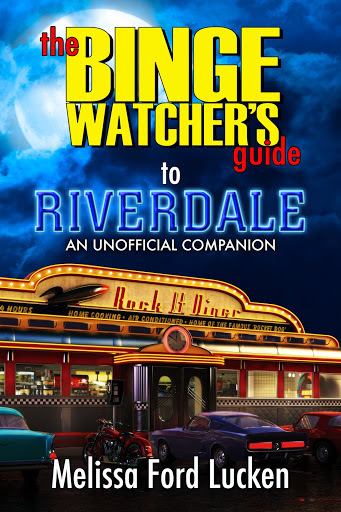
Busted families, broken hearts, secrets and corruption are the lifeblood of The CW’s gothic horror series Riverdale. The show is based on the original Archie comics, but this sinister town is a far cry from the wholesome, anyplace USA depicted in 80 years of the teen adventures featuring Archie, Jughead, Betty, Veronica, and the rest of the gang. This Riverdale is an other-worldly, ominous place where enigmatic parents and cunning town leaders hide wicked secrets while teens struggle to survive.
The Riverdale gang face the definitive dilemma: good vs. evil. They fight ghouls, a cult leader, a serial killer, and each other—all while sporting inspiring outfits and photo-ready hair. Great music, the occasional Vixens cheer dance-off, and too-steamy-for-high-school sex scenes add an undeniable layer of watchability to the fan-favorite show.
This Binge Watcher’s Guide will get you through the first four seasons. Keep the book beside you while binge; the trivia, quotes and episode commentaries will inform and entertain. Want more? The literary analysis, connection to the comics, and resources have you covered.
______________
Melissa Ford Lucken holds an MA in Special Education from Eastern Michigan University and an MFA in Creative Writing from Boston College’s program at Pine Manor College. She teaches creative writing and composition at Lansing Community College. Alongside her academic work, she has published more than sixty-five novels, novellas, and short stories as Isabelle Drake. She enjoys distance cycling and gardening.
The Binge Watcher's Guide to Riverdale, out April 1

Busted families, broken hearts, secrets and corruption are the lifeblood of The CW’s gothic horror series Riverdale. The show is based on the original Archie comics, but this sinister town is a far cry from the wholesome, anyplace USA depicted in 80 years of the teen adventures featuring Archie, Jughead, Betty, Veronica, and the rest of the gang. This Riverdale is an other-worldly, ominous place where enigmatic parents and cunning town leaders hide wicked secrets while teens struggle to survive.
The Riverdale gang face the definitive dilemma: good vs. evil. They fight ghouls, a cult leader, a serial killer, and each other—all while sporting inspiring outfits and photo-ready hair. Great music, the occasional Vixens cheer dance-off, and too-steamy-for-high-school sex scenes add an undeniable layer of watchability to the fan-favorite show.
This Binge Watcher’s Guide will get you through the first four seasons. Keep the book beside you while binge; the trivia, quotes and episode commentaries will inform and entertain. Want more? The literary analysis, connection to the comics, and resources have you covered.
______________
Melissa Ford Lucken holds an MA in Special Education from Eastern Michigan University and an MFA in Creative Writing from Boston College’s program at Pine Manor College. She teaches creative writing and composition at Lansing Community College. Alongside her academic work, she has published more than sixty-five novels, novellas, and short stories as Isabelle Drake. She enjoys distance cycling and gardening.

